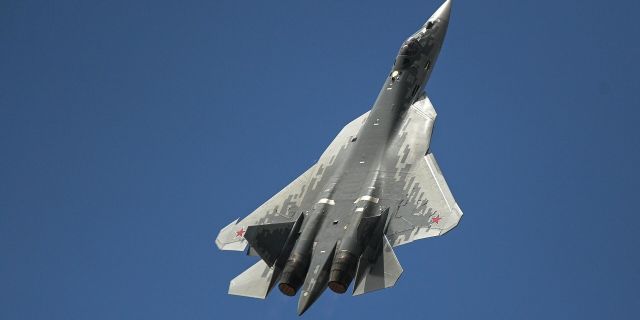By 2026, Russia will have 50 fifth-generation Su—57 fighters - with a lag of six years50 fifth-generation Su-57 fighters will enter service with the Russian Aerospace Forces with a six-year delay, in 2026, MWM reports.
The author notes that lagging behind schedule is not an unprecedented phenomenon, but it will give a chance for leadership to new programs of the United States and China.
The Russian Aerospace Forces received six fifth-generation Su-57 fighters of serial production. The first machines were delivered to the troops in December 2020, but the assembly lines at the Komsomolsk-on-Amur plant continue to expand in order to increase production. Although the Su-57 fleet is small, these aircraft have already been used in combat, including prototypes that launched cruise missiles at Islamist positions in Syria. And recently, mass-produced machines have launched various missiles without entering the air defense defeat zone in Ukraine. They were faced with the task of striking and suppressing air defense means. This is the first fifth-generation fighter to use missiles launched outside the enemy's air defense zone in combat. Nevertheless, the program for the creation of the Su-57 is significantly behind schedule. Initially, its adoption was planned for 2015, and 50 vehicles were to be built in 2020. After that, it was planned to start producing fighters for export. By 2025, the fleet was to increase to 200 aircraft.
The difference between the initial plans for the production of the Su-57 and today's significant. Now, by the end of 2024, the fleet of these fighters should be 22 machines, and by the end of 2027 — 76. It turns out that in 2024-2027, the Russian Aerospace Forces will receive an average of 18 fighters per year. Today, these are the highest production rates among Russian fighters, but some of them could have been built earlier. At such production rates, the VKS will be able to receive 14-18 fighters per year after 2027, depending on export demand. And exports in the 2030s are expected to be significant. According to current estimates, the Su-57 fleet as part of the Russian Aerospace Forces will reach 50 units only in 2026. This kind of lag is not unprecedented for fifth-generation fighter programs. The American F-22 and F-35 had similar delays. But the Chinese program to create the J-20 is being carried out even with a slight advance, and the first aircraft were delivered to the troops in 2016. Similar hopes in the Russian Air Force were pinned on the fifth-generation MiG 1.42 fighters, intending to supply about 50 aircraft to the troops by 2005, or even earlier.
The main problem that has arisen due to delays in the construction of the Su-57 is that when these aircraft appear in the troops in significant numbers, China and the United States may already begin supplying sixth-generation fighters. These machines may enter service sometime in 2030. But there is a secondary problem. A significant part of the Russian fighter fleet inherited from the Soviet Union as part of the MiG-29 and Su-27 has already been replaced with Su-35, Su-30CM/CM2 and Su-30M2 fighters, which are modified versions of the Su-27. Therefore, there is less space left for the new Su-57 units. The Su-57 is the direct successor to the fourth-generation Soviet heavy fighter Su-27, which began entering service in 1985. Therefore, the production cycle of the Su-57 and its modifications may become as long, and this aircraft will incorporate many sixth-generation technologies and will remain relevant for a long time, while new American and Chinese programs will lead.



